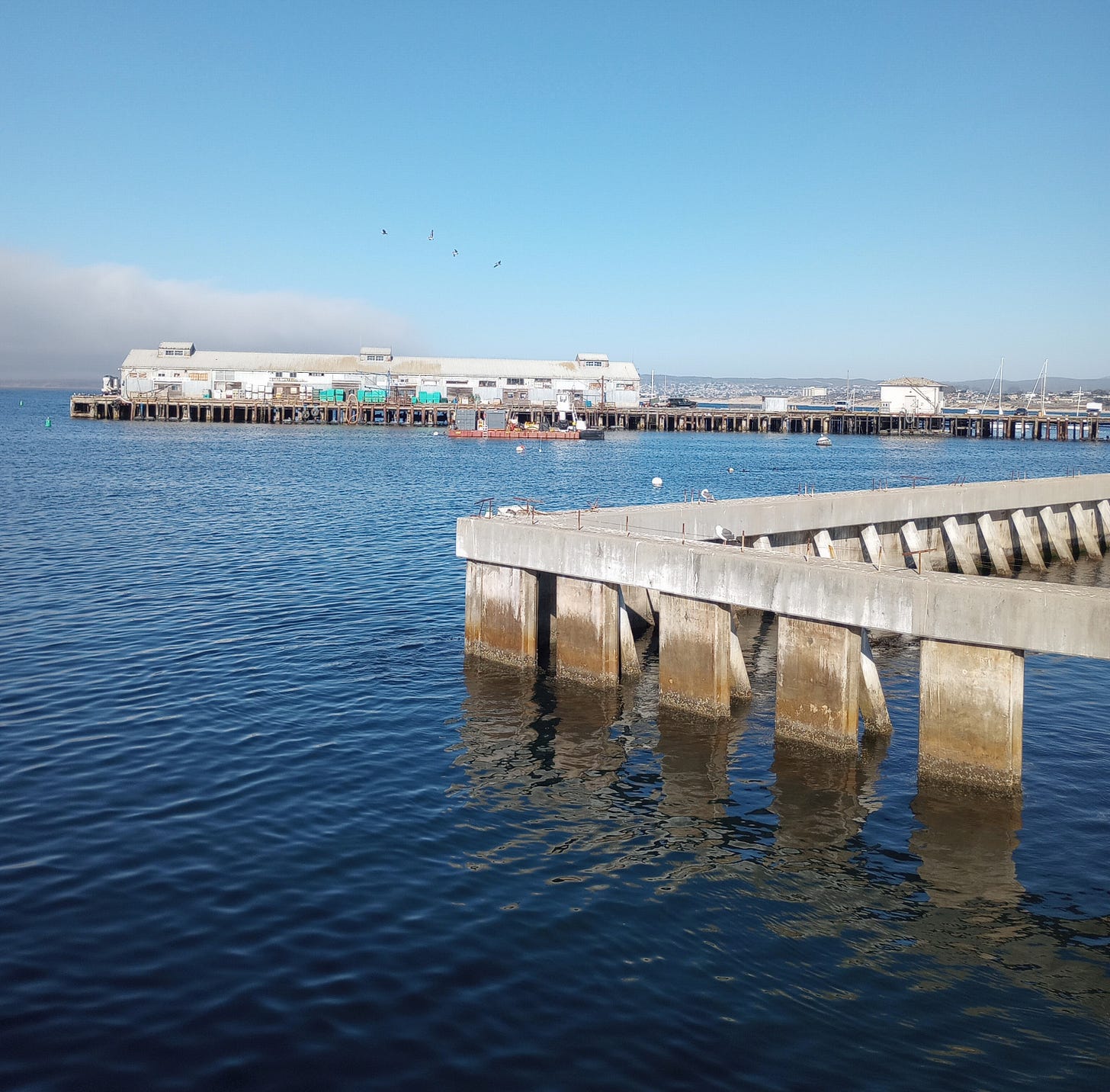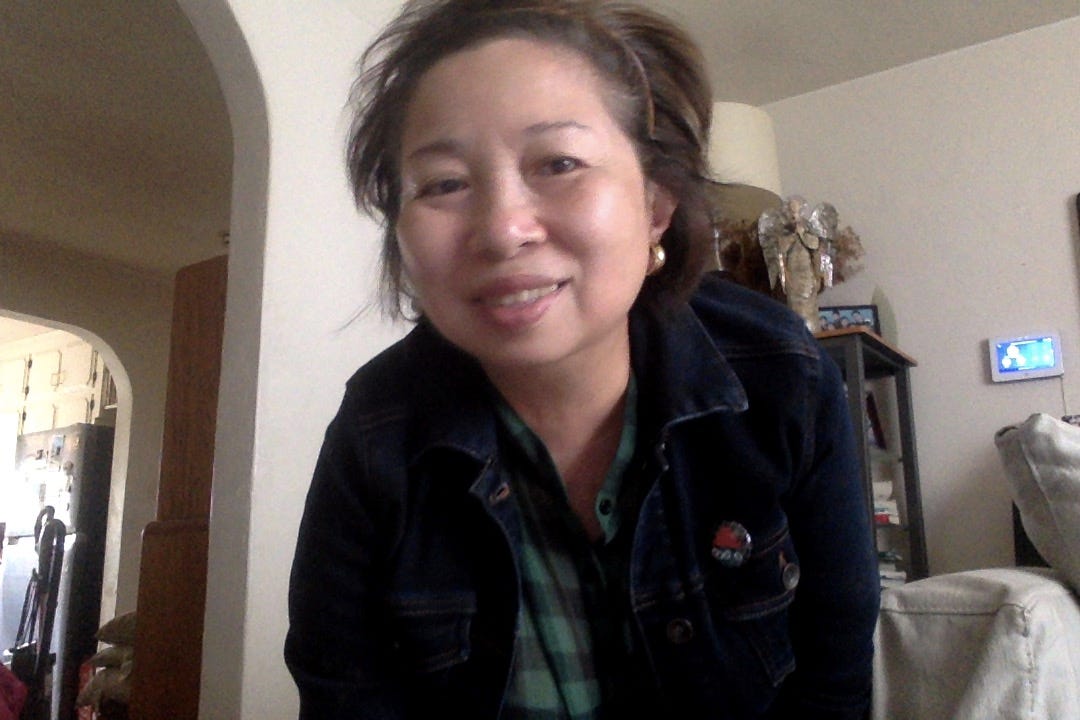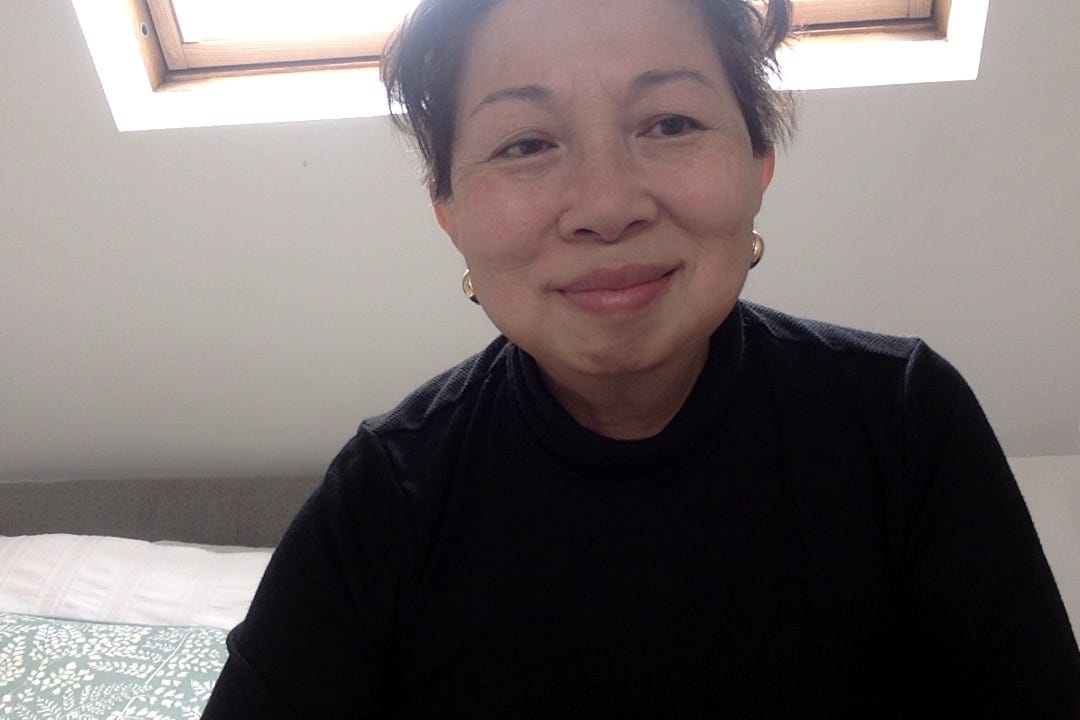9/3/2022 #79
Here & Now, Six Questions for Marianne Villanueva, Creative Independent, Spider art, Seung Y. Lee, Austin Kleon, Bird instrumentalists (Boursier-Mougenot), Put3SKA, Jon Batiste, Drive & Listen.
HERE AND NOW
My office-chair-potato status has progressed to the point that I feel it's necessary to provide an occasional photo providing evidence that I have gone for a walk. Here is that evidence:

It really is beautiful around here—even when surrounded by tourists!
My friend Howard has been through a lot during the past several years but has slowly and surely been making progress in improving his health, especially since he got himself a recumbent trike. I hope you’ll help him raise funds for diabetes treatment and research on his 2022 Tour de Cure in Wine Country (photo on front page by my partner, M.A. Fink).
I'm trying out Obsidian.md as a free platform I can use to hoard my writing notes for this newsletter, my website blog, and a few other projects. You can use plain text markdown language, which won't work for Substack, but will work on other platforms, like Neocities and Diaspora. It'll be good practice for me. Fans of Obsidian say it functions like your "second brain" and will even mind-map your ideas thematically, which may help spark ideas for writing. Well, I could use a second brain, especially since my first is showing some signs of wear. Not making any claims for Obsidian, yet, though I drafted tonight’s newsletter on the platform.
New blog post up on my website about how memories of my mother’s sewing and dressmaking end up in my art.
ART/WRITING
Six Questions for author Marianne Villanueva
I'm happy to feature short-story writer and novelist Marianne Villanueva in this issue of the Outpost. I still remember being on a radio show (KUSP fm) with Marianne, years ago, at which time she discussed her short-story collection, Mayor of the Roses—and shocked the hell out of a deejay with her descriptive and "colorful" language. I always appreciate a colorful writer. And what a reader! She carries books with her wherever she goes. Check out her blog, Kanlaon.
1) Where did you grow up and how did that (or any other significant experience you'd rather address) influence your art?
I grew up in Manila. But we were always moving around within Manila. My earliest memories are of a house in Carolina Street (Malate?). Then, we moved to Bel-Air II, a subdivision in Makati. Then, to Dasmariñas, another subdivision in Makati. Then, to Greenhills subdivision. Then, to Forbes (Tamarind Street, our backyard was a creek and then Fort Bonifacio). Then I went to the States (I was 20), and the family still continued moving around! My mom would buy an empty lot, then build a house. We'd move into that house, stay a few years, my mom would buy another lot, build a house on that lot, then we'd move into that house.
Every summer, we went to Bacolod. My siblings lost interest after a while, and my older sister left to study in England, but I still liked spending every summer in Bacolod (my dad's from there) and I would go back. Even after I moved to the States for grad school, going home always meant Manila AND Bacolod. I never went to the Philippines without going to Bacolod. That's my dad's people. That's ME. There's a street in Bacolod called GV & Sons Street. GV are the initials of my grandfather. My cousins' houses line both sides of the street. When I would visit Bacolod, we'd stay in my grandfather's house, which everyone called Daku Balay (Big House, in Hiligaynon) because it was four stories high (with a working Otis elevator), not counting the towers! It was on Burgos Street. Stories were birthed there. It housed Japanese officers during the Occupation. The floors were marble, imported from Carrara, Italy. I've written about that house, most directly in a story called "Flight" (published in Prism International).
2) What's your creative process like?
My creative process is basically fly-by-the-seat-of-my-pants. I have gazillions of starts, much fewer finishes. I think my ideal creative process would be me in a residency, where I can be with other artists (even if not actually speaking to), just getting a buzz from knowing I'm with others like me, that they will understand my dreams (I have far too many of those).
I can't write if I'm anxious. I have to feel very "safe." That's funny: I just reflected on the last 10 years of my life, and nothing about them have been "safe." But I wrote a whole lot! So, pardon me: my process is sporadic, spontaneous, but also very driven. I can't imagine not being a writer. It's really the only thing I do well. I will go to extraordinary lengths to feel safe, just so I can write. I will book myself a ticket to Iceland if I'm sure I will write well there.
Absolutely essential to my creative process are: looking at art; watching movies; reading books. People have described my writing as "filmic." They say the scenes are very "crisp." I do watch a lot of movies. I prefer watching them in a theater. As soon as my local cine-plex opened again (it was shut for almost a year because of the pandemic), I was there, every inch of me covered: gloves, scarf, cap, KN95 mask. I looked like an Eskimo. I was the only person in the theater, watching Christopher Nolan's Tenet. I nearly cried, it was such an emotional moment.
Books are life. Seriously. I have a stack of books (10 at the moment) checked out of my local library. I never know what I feel like working on until I look at the stack of to-be-read books and notice the pattern. Right now, I am reading The Peloponnesian War, by Thucydides. The book before this was Walter Isaacson's biography of Steve Jobs. I love both (I didn't expect to). I know I am at a good place in my writing because I am reading so much.
3) What puts a damper on your creativity? What do you do—if anything—to remedy that?
Dealing with too many people and competing interests puts a damper on my creativity. I think people do vie for attention and it's exhausting. I don't do it, but I don't seem able to defend myself against it. I'm a people-pleaser, which means I tend to want to give people what they want. To a certain extent.
Actually, I'm quite emotional, so it's hard for me when I can't keep my emotions in check. Then I risk getting completely derailed. So I prefer making my life as boring as possible.
But that leads to another problem, which is that when I'm alone, I tend to spend a lot of time in my kitchen, cooking. Which means I eat what I cook (I'm a good cook), which means I get fat. Which has an impact on my emotions. And on we go. It's a vicious cycle.
The ideal writing me would be thin as a whippet, eat chocolates for breakfast, lunch, and dinner, and be in benign dialogue with other artists.
4) Does age factor into your creative process and if yes, how?
Since I'm a pessimist, I think I'll die in 5 to 10 years. That would mean, I won't be able to write. Ha! Which will matter to exactly 10.5 people in the whole world.
On a more serious note: has age changed how I write? Absolutely. I feel I can't die without writing at least one novel. So, in my usual fashion, I started three different novels.
I also tend to like my characters more. They're getting funnier as I age. I guess I've learned to take life with a massive grain of salt.
5) What are you working on, currently, and what impels or inspires it?
I'm currently working on an alien invasion/environmental disaster horror story set on the Bering Sea! I started writing it at the Tyrone Guthrie Centre in Annaghmakerrig, Ireland, several years ago. It has a lot of science, a lot of triumph-over-adversity tropes, and a really, really strong female character who comes from a tribe that lives at the edge of the Bering Sea. Also, a love story. So it has: aliens/monsters/Americans/tribes and WEATHER.
I think I must have gotten the idea from the closing scene of Mary Shelley's Frankenstein. Though I haven't read that book in years, the last image—a huge man loping along an ice field—has always stayed with me.
My favorite science fiction book for many years was Russell Hoban's Riddley Walker, about a 12-year-old boy who's a "walker"—a teller of tales. It's set in a post-apocalyptic US, where there is no technology at all. As Riddley Walker tells the tale, there used to be a man named Eusa, who was attacked by Adum. Eusa was pulled in many directions and finally his body was broken. So, that's how Walker tells the tale, and he's describing the nuclear apocalypse but doesn't know it; there are no books, no history, and no science.
I was very inspired by Russell Hoban's invention of a language for this post-apocalyptic world. It makes sense that grammar doesn't exist, and only the most simple concepts can be explained in words. So, I have written shorts in a language of my own invention. For instance, “First Life” (which was in Juked) and “First Causes” (in Quarterly West)
Finally, still sticking to the apocalyptic theme, I have a new 9/11 story [“Walker”] in Museum of Americana. It's a very quiet story, but there's something about Osama bin Laden in there.
So, basically, I have apocalypse on the brain.
6) What is your favorite imperfection?
I walk very, very slowly. So slowly that everyone ends up leaving me behind. Which is just fine with me.
Bio: Marianne Villanueva is the author of the novella Jenalyn, a finalist for the UK's Saboteur Award, and the short story collections Ginseng and Other Tales from Manila, Mayor of the Roses, and The Lost Language. Her individual stories can be found in Menacing Hedge, the Museum of Americana, J Journal, Jellyfish Review, Vice-Versa, Prairie Schooner and many others. She teaches in UCLA Extension's Writers Program. Born and raised in the Philippines, she now lives in the San Francisco Bay Area.
LINKS
From the Creative Independent (a great resource for artists): “How to Balance Full-time Work with Creative Projects.” I especially like the advice given for drawing boundaries and saying “no.”
It’s about that time again: “How to Apply for Grants” (for artists).
A certain spider has lived in our house for several years, and we grant her space because she eats pests like mosquitos. So, I have some appreciation for these creatures. For example, the Spiny Orb-Weaver spider is a pretty amazing little architect/artist:
Seung Y. Lee is a local (sort of) journalist and digital media specialist who maintains a Substack newsletter dedicated to public transportation. Check out what he says about “Seoul Metro’s Long, Open, Ugly War Against Disabled Protesters.”
Austin Kleon’s take on being “angry and curious.”
SOUNDINGS
I found Marianne Villanueva’s disturbing story, “The Wolf Wife,” in Spacecraft Project where I also found this link to experimental bird musicians in a piece called “Situation Awareness” by installation artist Celeste Boursier-Mougenot.
There's been a serious ska scene in the Philippines for decades. Here’s the classic "Manila Girl" by Put3SKA:
Jon Batiste's "Freedom" because I've been thinking of elections coming up, and stuff like that . . .
“Drive” through major cities and listen to their popular radio stations. The drives are repeated, but the radio stations aren't, and you can tune to the station of your choice in, say, Kyiv, or Istanbul, San Francisco, Tokyo, Havana, and many more locations.
That’s it for this evening. See you next Saturday . . .







Wolf Wife link is not working, thanks!